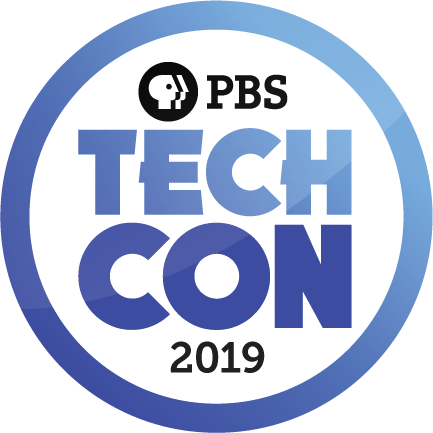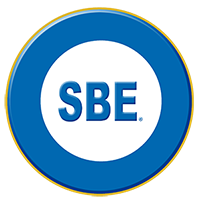ATSC 3.0 and the rapid launch of NextGen Broadcast are the drivers behind the first-ever SBE/PBS TechCon collaborative tutorial day, which takes place Saturday, April 6, 2019 at PBS TechCon, held at the Flamingo Las Vegas Hotel. Open to anyone eager to learn what ATSC 3.0 means for the future of broadcast, the tutorial takes place the day after TechCon, is affordable ($95 for SBE and PBS members), and open to all. Online registration is now open for this session at bit.ly/SBEatPBS.
 Periodically, broadcast goes through an extensive revamp. The launch of TV, FM, DTV – and now NextGen Broadcast – are pervasive and swift. For decades, the Society of Broadcast Engineers (SBE) has held programs and tutorials to help broadcast professionals build the necessary new skill sets required in our industry. This year, several dozen NextGen stations take to the air. The pace is likely to pick up. Broadcast engineers need to understand the potential of ATSC 3.0 and see what’s under the hood: the architecture, equipment, configurations, and options that go into NextGen. What follows are highlights of the daylong agenda.
Periodically, broadcast goes through an extensive revamp. The launch of TV, FM, DTV – and now NextGen Broadcast – are pervasive and swift. For decades, the Society of Broadcast Engineers (SBE) has held programs and tutorials to help broadcast professionals build the necessary new skill sets required in our industry. This year, several dozen NextGen stations take to the air. The pace is likely to pick up. Broadcast engineers need to understand the potential of ATSC 3.0 and see what’s under the hood: the architecture, equipment, configurations, and options that go into NextGen. What follows are highlights of the daylong agenda.
– The regulations that dictate the requirements of the transition and technical compliance. These include MVPD notifications, carriage and 1.0 host requirements and agreements. Meeting these obligations and preserving station cashflow require that broadcast engineers have a good handle on how far ATSC 1.0 content compression can be pushed and at what cost. It’s valuable to have a firm grasp of video quality measurements. Partnering is a big part of Pearl’s and many others’ transition plans creating channel shares. It’s a broadcast engineer’s role to competently fill in the technical specifications in each of these legal arrangements.
– Converting a transmitter to 3.0 service and performing the proof-of-performance and acceptance testing will be covered by the engineers that build the transmitters. Further, some studio-to-transmitter links (STL) can be reutilized or upgraded; others cannot. While most stations will start with converting a “big-stick,” many will be looking at extending their coverage and increasing their penetration with the additional boosters that OFDM enables in a way that no other modulation previously used in broadcasting has. We will give you a good foundation for designing (or selecting vendors and partners that can help), planning and building your NextGen distribution system, including single-frequency networks.
– The centerpiece of NextGen is the scheduler. This cannot be understated. You will understand why this is, and we’ll cover the most practical configuration options. Key vendors will address how to use their solutions and explain the tradeoffs and system limitations for each as well as existing workarounds. We will also look at the field measurements of the past and future and how they impact an ultra-flexible system where so many variables are in play.
– Performance. We will cover monitoring the performance of the NextGen system and look at what test equipment, TVs, dongles and first-day hacks are available. These are all critically important to a successful launch. The options are early in their development cycle, and broadcast engineers will be doing a lot of hand-holding and integrations (read that “MacGyvering”).
– Finally, we’ll address some of the issues of adoption, timing, budgeting, project planning and (looking further out), the enhanced content and services that NextGen Broadcasting is designed to enable. Everybody in your world will want to know what NextGen is all about. Some will have overindulged in the hype. Most will have more misunderstandings than real knowledge (we don’t throw out TVs this time). For others, there will be fear, uncertainty and dread. We’ll conclude with what is real and what is not, matching adoption curves with equipment life cycles. We will separate what happens today and what happens further down the road. In particular, we’ll look at what changes in broadcast station architecture and workflows, including digital ad insertion and ad tech, will help move the revenue needle.
We’ll do the best we can to give you what you need. But when the hype becomes real, it is always a big deal. This year, you might want to get support to come to Vegas a couple of days before NAB opens, and join us Saturday, April 6, at the PBS Technology Conference. Register now: bit.ly/SBEatPBS.
Also at TechCon, Another ATSC 3.0 Option
The IEEE Broadcast Technology Society will be hosting the ATSC 3.0 Roadshow at PBS TechCon 2019. BTS will be hosting the ATSC 3.0 training seminar taught by expert Gary Sgrignoli of Meintel, Sgrignoli, and Wallace, the noted digital TV transmission consulting firm. This course will cover the ATSC 3.0 Physical Layer and prepare participants to take the SBE ATSC 3.0 certification exam. Registration and seminar information can be found on bts.ieee.org.

